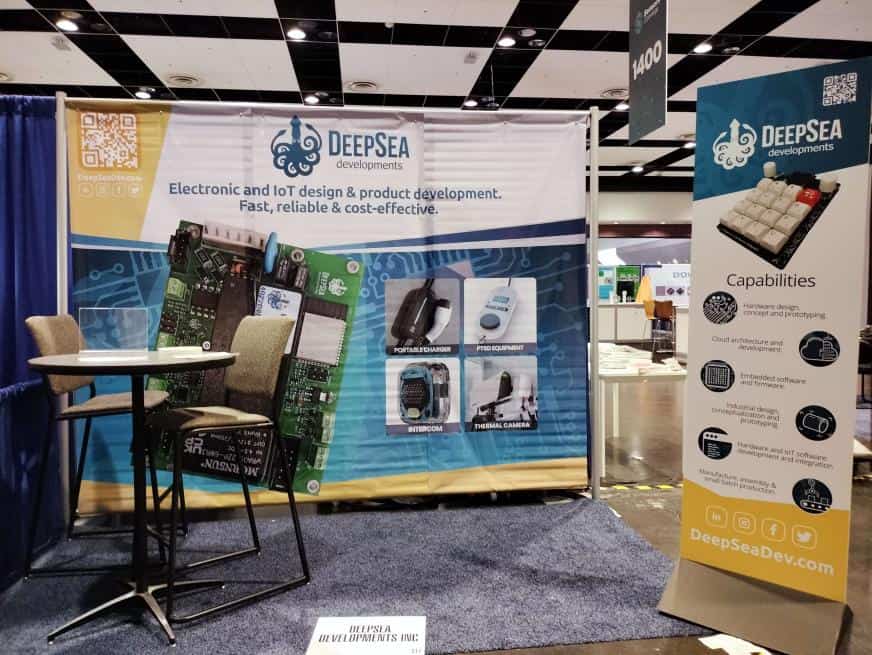When we offer firmware consulting services to our clients, the terms “embedded software” and “firmware” are often used interchangeably. However, they refer to distinct components that play critical roles in the functionality of electronic devices. Let’s explore the key differences between embedded software and firmware, their respective functions, and their importance in modern technology.
What is embedded software?
Embedded software is a specialized type of software designed to operate hardware systems. Unlike general-purpose software that runs on computers or smartphones, embedded software is tailored for specific functions within an embedded system (see hardware design). These systems can range from simple household appliances to complex industrial machines.
You can find several embedded systems examples in real life, like calculators, washing machines, and tracking systems, among others.
Characteristics of embedded software
- Specific functionality: Embedded software is developed for a specific task or set of tasks. It ensures the hardware operates correctly and efficiently.
- Resource constraints: It is optimized to work with the limited resources of the hardware, such as memory and processing power.
- Real-time operation: Many embedded systems require real-time responses, meaning the software must perform tasks within strict timing constraints.
- Integration with hardware: Embedded software is closely integrated with the hardware it controls, often requiring in-depth knowledge of the hardware architecture.
What is firmware?
Firmware is a specific type of embedded software that provides low-level control for a device’s specific hardware. It acts as an intermediary between the device’s hardware and higher-level software, ensuring that the hardware operates as intended.
Firmware is typically stored in non-volatile memory, such as ROM, EPROM, or flash memory, which retains its data even when the device is powered off (see firmware programming).
Characteristics of firmware
- Low-level control: Firmware provides fundamental control over the hardware, managing tasks like booting the device and controlling hardware components.
- Permanent storage: Unlike general software, firmware is stored in non-volatile memory, ensuring it remains intact even without power.
- Updates: Firmware can often be updated to improve functionality or fix bugs, although this process can be more complex than updating regular software (see OTA over-the-air update).
- Essential for operation: Without firmware, the hardware would not be able to function, as it initializes and manages the device’s core operations.
Key differences between embedded software and firmware

As we mentioned above, while embedded software and firmware share similarities, they have distinct differences that set them apart: level of operation, flexibility and complexity, storage, and updates.
Level of operation
The embedded software typically operates at a higher level than firmware, providing more complex functionalities and interacting with the operating system and application layers. On the other hand, firmware operates at a lower level, directly controlling the hardware and ensuring it performs basic functions (what is MicroPython).
Flexibility and complexity
Embedded software is often more flexible and can be more complex, handling a wider range of tasks and interactions with other software components. Firmware is generally less flexible, as it is designed to perform specific, low-level tasks essential for the hardware’s operation.
Storage and updates
Embedded Software can be stored in various types of memory, depending on the system’s design, and can be updated relatively easily. On the other hand, firmware is stored in non-volatile memory and requires specific processes for updates, which can sometimes involve risks such as bricking the device if done incorrectly.
The importance of both in modern technology
Both embedded software and firmware are crucial in modern technology, each serving its unique purpose to ensure devices function correctly. From consumer electronics to industrial machinery (see IoT use cases), their roles are indispensable in delivering reliable and efficient performance.
You might be interested in reading more about these topics:
- Embedded programming languages
- IoT architecture
- ESP32 Chip
- IoT hardware
- Why is prototyping important
- What can Python language do
By understanding the difference between embedded software and firmware, you can make informed decisions about which service best aligns with your project’s needs. Each project is unique, with specific requirements and challenges. That’s why it is essential to have expert consulting services to ensure your project is developed effectively and efficiently, tailored to your particular goals and constraints. Click on the image below to learn more about our firmware development services.








